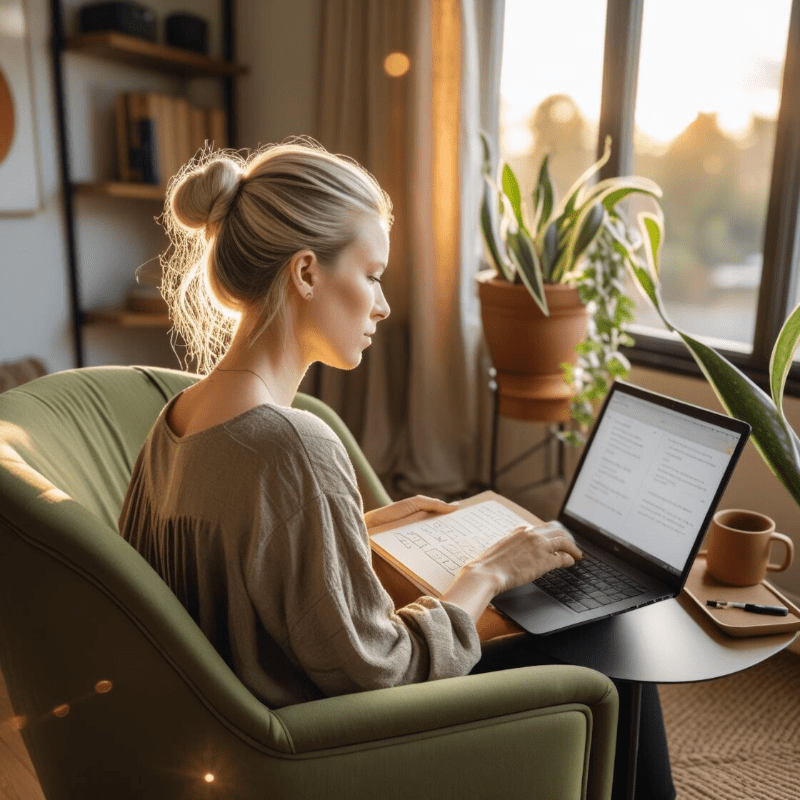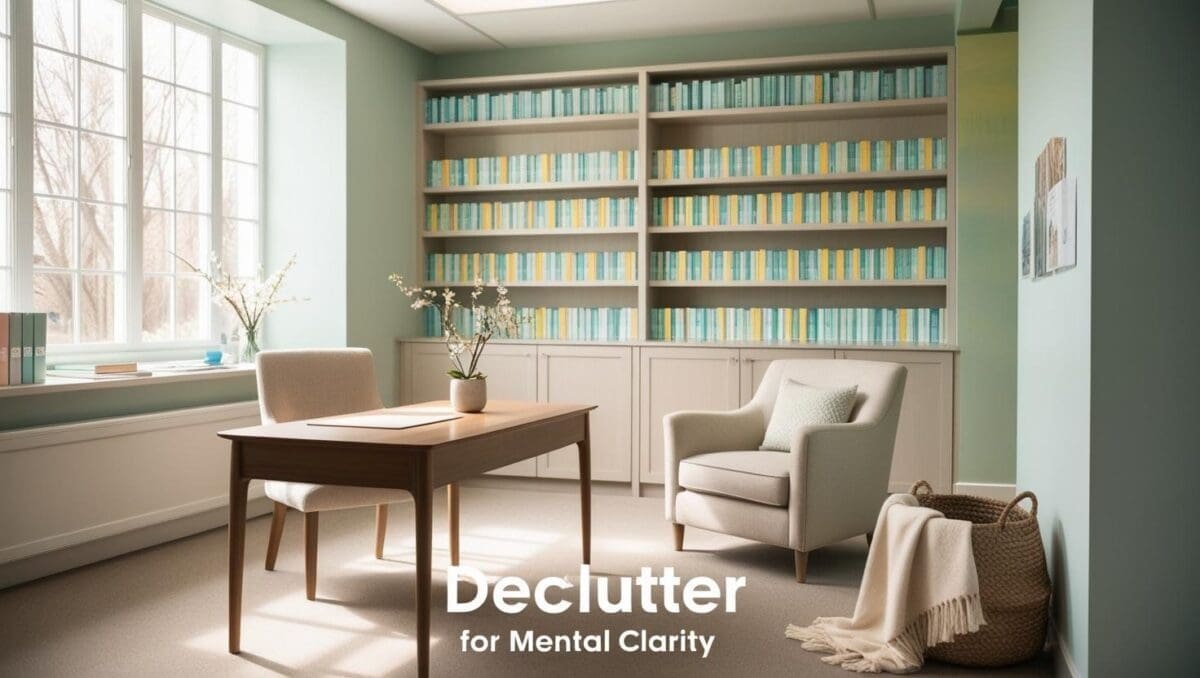The Power of Minimalism in Small Therapy Spaces
Not every therapist has the luxury of a large office, but that doesn’t mean your space can’t feel open, airy, and inviting. Even in a small therapy office, the right minimalist design choices can create a calm, clutter-free environment that fosters deep conversation and emotional well-being.
A minimalist approach helps maximize small spaces by focusing on intentional furniture choices, clever storage solutions, and a soothing color palette. Instead of feeling cramped or overwhelming, your compact therapy office can feel open, peaceful, and efficient—allowing both you and your clients to feel comfortable and at ease.
In this article, we’ll explore how to design a minimalist therapy office in a small space while maintaining functionality, comfort, and a serene atmosphere.
1. Designing with Intent: Creating a Functional & Open Space
When working with a small therapy office, every design decision should be intentional. The goal is to make the space feel larger, uncluttered, and breathable, even with limited square footage.
Key Strategies for Small Space Minimalist Design:
✔ Use Light & Neutral Colors – Soft, warm tones make the room feel larger and brighter.
✔ Choose Multi-Functional Furniture – A sleek desk with hidden storage or a foldable side table can save space.
✔ Limit Decorative Items – Keep surfaces clear, and opt for one or two statement pieces instead of multiple decor items.
✔ Prioritize Open Floor Space – Avoid bulky furniture that makes the room feel crowded.

2. The Best Minimalist Furniture for Small Therapy Offices
The key to maximizing space in a minimalist therapy office is choosing furniture that is both functional and space-saving.
Furniture Essentials for Small Therapy Spaces:
✔ A Compact Armchair or Loveseat – Choose a neutral-toned, slim-framed armchair instead of a bulky couch.
✔ A Floating or Wall-Mounted Desk – These free up floor space while providing a functional workspace.
✔ A Multi-Purpose Side Table – Opt for a foldable or nesting table that can be adjusted as needed.
✔ Hidden Storage Pieces – A bench with storage or a drawer unit under the desk helps keep the office clutter-free.

3. Maximizing Storage Without Clutter
In small therapy offices, storage solutions should be discreet and functional to avoid visual clutter.
Minimalist Storage Ideas for Small Spaces:
✔ Floating Shelves – Keep books and essentials neatly arranged without taking up floor space.
✔ Neutral Storage Baskets – Use woven baskets to hide therapy tools, tissues, and supplies.
✔ Hidden Drawers & Wall Cabinets – A wall-mounted storage unit can keep the space feeling clean and minimal.
✔ Minimal Desktop Storage – Use a small drawer unit or a storage organizer for papers and supplies.

4. Using Mirrors & Natural Light to Open Up the Space
One of the best ways to make a small therapy office feel bigger is by incorporating mirrors and maximizing natural light.
Tips for Enhancing Space with Light & Reflection:
✔ Use Large Mirrors – A round or rectangular mirror creates the illusion of depth.
✔ Choose Sheer Curtains – Let in natural light while keeping the space private.
✔ Opt for Warm, Soft Lighting – Use wall sconces or cordless lamps instead of harsh overhead lights.
✔ Keep Windows Unobstructed – Avoid bulky window treatments that block light.

5. Keeping Decor Minimal but Meaningful
In a small therapy office, decor should be intentional and understated. The right decor choices enhance the atmosphere without overwhelming the space.
Minimalist Decor Essentials for Small Therapy Offices:
✔ A Single Statement Artwork – Opt for abstract, nature-inspired, or soft pastel artwork.
✔ A Touch of Greenery – A small potted plant or a single fresh flower adds life.
✔ Textured Accents – Use linen pillows, a woven throw, or a soft area rug for warmth.
✔ Candles or Soft Lighting – A simple scented candle or warm-toned lamp makes the space feel cozy.

Final Thoughts
Even in a small therapy office, a minimalist design approach can make the space feel bigger, brighter, and more peaceful. By choosing functional furniture, maximizing storage, and incorporating light, neutral colors, you can create an inviting, professional, and calming environment for both you and your clients.

About the Author
Hi, I’m Eve, a former school counselor with a master’s degree in School Psychology and a passionate advocate for children and families navigating sensory challenges. As a mom of children with sensory sensitivities, I deeply understand the journey special-needs parents face, and I dedicate myself to researching and sharing practical solutions to help children thrive and feel comfortable in their bodies. My goal is also to empower counselors, therapists, and psychologists with creative strategies and supportive resources to enrich their everyday practice. When I’m not writing or exploring new therapeutic approaches, you’ll find me spending quality time with my family and continually seeking inspiration from everyday moments.


